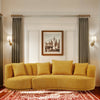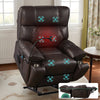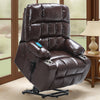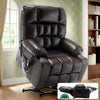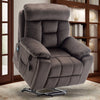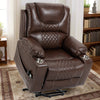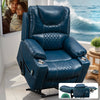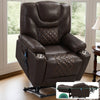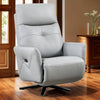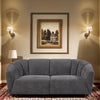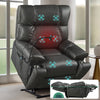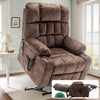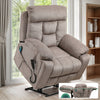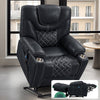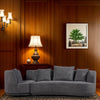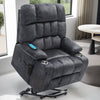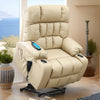Understanding the Difference: Size and Comfort
The Size Factor: Why Big Recliners Exist
Big recliners exist to cater to larger individuals or those who prefer more space. They offer wider seats and taller backs, providing extra room for comfort. These chairs are designed to support higher weight capacities, often up to 400 pounds or more. Big recliners also feature deeper seats and longer footrests to accommodate taller users. This size difference ensures that people of all shapes and sizes can enjoy the comfort of a recliner without feeling cramped or unsupported.

Comfort Comparison: Recliners and Big Recliners
Both standard and big recliners aim to provide comfort, but they do so in different ways. Standard recliners are designed for average-sized users and offer a snug fit. They typically have ample padding and support for most people. Big recliners, on the other hand, provide more space and freedom of movement. They often have extra cushioning and wider armrests for added comfort. The larger size allows for easier repositioning and can be more comfortable for extended periods of use.
Selecting for Your Body Type
Choosing between a standard and big recliner largely depends on your body type. Here are some factors to consider:
- Height: If you're over 6 feet tall, a big recliner may be more suitable.
- Weight: Big recliners are designed to support higher weight capacities.
- Body shape: Broader shoulders or hips may benefit from a wider seat.
- Personal preference: Some people simply enjoy more space, regardless of size.
Consider trying both types before making a decision to ensure the best fit for your body.
The Practicalities of Big Recliners in Home and Office
Space Considerations in Small Spaces
Big recliners require more floor space than standard models. This can be a challenge in smaller homes or apartments. Before choosing a big recliner, measure your available space carefully. Consider the following:

- Room dimensions
- Traffic flow around the chair
- Clearance needed for full recline
In tight spaces, look for wall-hugger models that require less clearance. Some big recliners also come with space-saving designs to help fit in smaller areas.
Big Recliners: A Luxury for Relaxation or Reading?
Big recliners offer a luxurious experience for relaxation and reading. Their spacious design allows for various comfortable positions. Many users find big recliners ideal for:
- Watching TV or movies
- Reading books or tablets
- Napping or sleeping
- Working on laptops
The extra space can make long periods of sitting more enjoyable. Some models even include features like built-in massagers or heating elements for added comfort.
Customization Options for Big Recliners
Big recliners often come with more customization options than standard models. This allows users to tailor the chair to their specific needs. Common customization features include:
- Adjustable headrests
- Power recline functions
- USB charging ports
- Cup holders and storage compartments
- Choice of upholstery materials and colors
These options can enhance the functionality and aesthetics of the recliner, making it a perfect fit for your lifestyle and decor.
Economic and Quality Factors to Consider
Big Recliners vs. Standard Recliners: What You're Really Paying For
Big recliners typically cost more than standard models. This price difference reflects several factors:

- More materials used in construction
- Higher weight capacity and durability
- Advanced features and customization options
- Specialized design for larger users
While the initial cost is higher, big recliners can offer better value for those who need the extra size and support. They may last longer and provide better comfort, potentially saving money in the long run.
The Best Big Recliners: A Top 5 List
- La-Z-Boy Astor Platinum PowerReclineXR+
- Ashley Furniture Yandel Power Lift Recliner
- Lane Home Furnishings Stallion Recliner
- Catnapper Burns Power Lift Recliner
- Seatcraft Pantheon Big & Tall Home Theater Seating
These models offer a range of features, from basic comfort to advanced power functions. Each caters to different needs and budgets within the big recliner category.
Warranty and Longevity: The Value Proposition of Big Recliners
Big recliners often come with better warranties than standard models. This reflects their higher quality construction and durability. When considering the value of a big recliner, look at:
- Length and coverage of warranty
- Frame and mechanism guarantees
- Upholstery warranties
- Customer service reputation
A good warranty can protect your investment and ensure years of comfortable use. Many big recliners are built to last, with sturdy frames and high-quality materials. This longevity can offset the higher initial cost, making them a smart choice for long-term comfort and value.







